
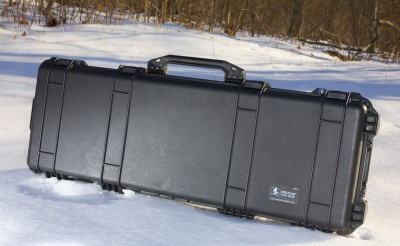
Despite being left out in the snow the day before, 24 hours later the Pelican 1720 Long Case had not leaked. Notice the four pairs of vertical ribs, which help stengthen the polymer case.
By Guy J. Sagi
Pelican
www.pelican.com
Even if you’re only driving to a nearby destination, there’s no reason to risk your long-term investments on a bargain-basement rifle case. There are some great deals out there, but if you value your firearms and gear, a good case for travel is the least expensive “insurance” you can buy. Pick the right one and it will pay dividends for years.
Whether it’s an unexpected downpour or clumsy baggage handlers, the Pelican 1720 Long Case is designed to maximize the chances of your rifle’s safe arrival. Lots of companies make the same claim about their products, but during testing this case kept its contents moisture free after 24 hours in the snow, four hours in the rain and in the back of a truck driving through an ice storm. The automatic pressure-equalization valve refused to admit any water, and the polymer case remains relatively scar free, despite airline travel. Internally, three foam inserts mean there’s little risk to the thousands of dollars and countless hours you’ve invested in setting up your rifle and optic.
There are tradeoffs, though. The Pelican 1720 Long Case is hardly a flyweight at 19 pounds, it will set you back around $200 and the maximum rifle length it can hold is 42 inches (ideal for most ARs, but too short for many hunting rifles).
Reinforcements
The polymer case measures 44.37x16x6.12 inches and is available in black, desert tan and OD green (special order). Walls, lid and base all have ¼ inch thick polymer walls, which accounts for some of the heft, but there’s probably just as much weight found in the body’s well-designed reinforcement.
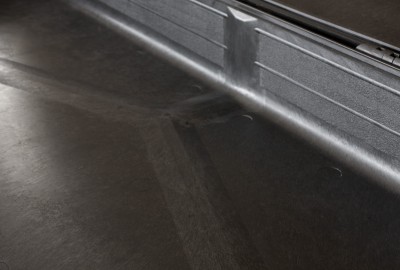
A slightly thicker “Y” section of polymer is found in the cases’ bottom, minimizing the chances it will begin to bend and fatigue after prolonged use.
A good example of the thought that went into this case is found on the lid. Its 709.9 square inches of flat surface begs for heavy objects to be placed atop when loading a truck, van or cargo hold. A quarter inch of polymer is pretty tough, but with enough pressure it can fatigue, inching closer to the rifle and optic as it bends and warps. Pelican remedies the problem by adding four pairs of vertical ribs across the lid, each ¼ inch tall and ¼ inch wide, effectively making ½ inch of polymer bear (and distribute) most of the weight.
The treatment also explains why the case didn’t suffer extensive scarring during testing. The ribs were nicked in a few places after 250 pounds rested on the case during a six-hour drive, but the remainder of the lid was unblemished. Improper packing, obviously, will change that equation, but even when subjected to airline abuse the case came through with flying colors thanks to the (to borrow an electrical term) standoff insulation.
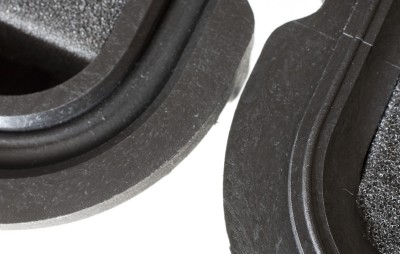
An O-ring is located in a channel in the lid (left) and the case’s base (right) has a 1/4 inch raised section that invades that space, providing an airtight seal once the rifle case is closed and latches secured.
The ribs continue on the sides and underside of the case, encircling it and maximizing the strength-enhancing effect. In addition, the bottom has eight ovals of the same height. They appear to serve as “feet” to elevate the Pelican above abrasive gravel, taking part of the brunt if you have to drag the case downrange or off a dirty truck.
Radiating from each corner is a quartet of ¼ inch-thick polymer ribs for added stability in a particularly vulnerable area. Internally a similar treatment is employed, although it’s hidden by foam.
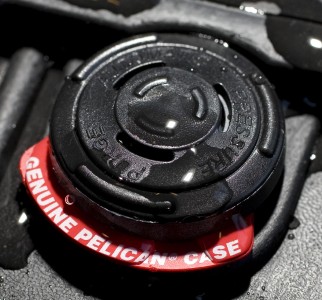
The automatic pressure-equalization valve apparently works well, since the case was never tough to open, even after long flights. Despite being doused several times with water, it did not leak.
Providing structural integrity horizontally is a beefy lip where the lid and base meet. Sealed, it measures 1 inch thick, and .655 inch wide. Each side has added reinforcement, as well.
Air Tight
Some companies would be content calling the unit watertight with a lip that generous, but not Pelican. The 1720 Long Case has a buoyancy rating of 160 pounds, and it refuses to let air, snow, dust and even ice to enter.
To test those claims, the case was subjected to 24 hours in a snowstorm. Then it rode in the back of a pickup truck driving through an ice storm and was left in a pouring rain for four hours. It didn’t leak at all.
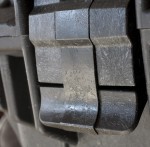
When closed, the “Double Throw” latches are flush against the case and relatively protected by heavy polymer barriers.
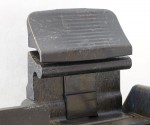
This is what the “Double Throw” latch looks like from underneath, before the bottom paddle is pulled.
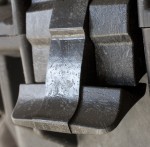
To open, the bottom section of the “paddle” is pulled. Notice the upper, beefier part of the latch still has a secure hold of the lid.
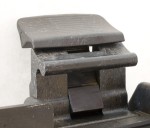
Seen from the bottom, as the first paddle is pulled, leverage is applied from within by the bar now seen protruding. As a result, the case is one of the easiest opening we’ve tested.
The lid’s O-ring, located in a ¼ inch channel that encircles the entire case, explains the feat. A ridged portion on the main body applies pressure when the case is closed and ensures a watertight seal. If after prolonged use the seal begins to leak, a replacement is $11. Although the rubber “gasket” is located in the lid, in testing it didn’t drop or fall, which can be annoying with some models.
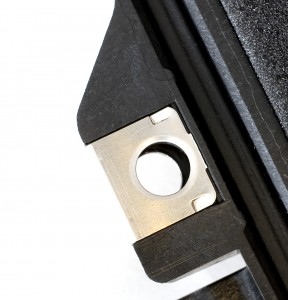
To maximize the effort required to break into the case, stainless steel reinforcement is found an all the latches.
But an airtight seal can provide its own challenges after an airline flight or when changing altitudes. Getting those latches open when there’s a significant difference between the barometric pressure and the pressure captured inside the case can be a lesson in frustration. The Pelican 1720 Long Case remedies the problem with an automatic pressure equalization valve. There were no problems opening the case, even after a long flight. And it did not leak water at all during submersion.
Latches
Part of the ease of access can be attributed to what Pelican calls “Double Throw” latches, which have two paddles. Opening begins when the generous 2.027 inch-wide, lower paddle is pulled. At first, the bigger, more secure one remains stationary. But, as the first bar moves, a mechanism underneath applies leverage against the case’s main body, freeing the lid almost effortlessly.
The upper latch really doesn’t come into play when opening the case, but its slightly wider profile and beefy size snaps with authority when closing. Despite the ease of opening, the case is extremely secure and air tight. The case comes with four latches.
Whenever traveling, locks are a good idea (and mandatory for airlines), but criminals know how to work a hacksaw through polymer. There are two padlock locations on this case (a four-lock version is also available), and to slow thieves down they are reinforced with stainless steel protectors in both the lid and main body. Remember, though, the walls and reinforcement on this case are thick, so you may need to purchase longer padlocks.
Get a Grip
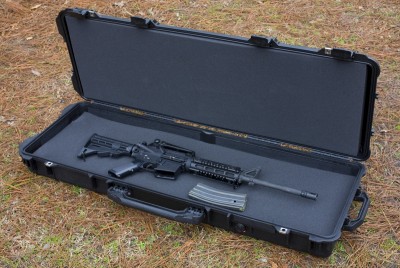
The case can carry rifles up to 42 inches in length, which may be too short for many hunting rifles, but there’s room to spare with most AR-15s.
Dragging a case this big around an airport or out of your car when it’s filled with gear can be a real chore. Luckily, this case comes with three handles.
The largest is located between the padlock locations and is 12 ½ inches long and 1 inch wide. It secures against the side to minimize the chances it will be broken or damaged while in transit. Two more, smaller handles are found at the sides, just in case it’s going to take a team effort to move all that gear. They measure 6 ¾ inches long and ¾ inch wide and also secure when not in use.
Wheels
The Pelican 1720 Long Case also has a pair of well-protected polyurethane wheels that are 1 3/8 inches wide. They take abuse well and the ball bearings make wheeling the case up to the check-in counters easy.
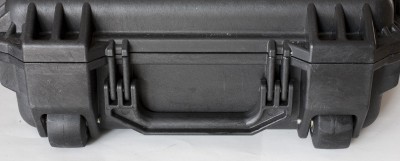
The wheels and bearings work well, but the short 10 7/8 inch wheelbase makes things tough when taking a corner and almost impossible if you’re piggybacking a soft bag on top.
The only real complaint is the short wheelbase. A case this thin can’t provide much of one, but at only 10 7/8 inches it doesn’t corner well and not at all when a soft bag is atop.
Interior dimensions are 42×13.5×5.25 inches. The lid’s depth is 1.75 inches, while the main body is 3.5 inches deep. The test case came with three foam inserts, although a version without any is available.
Beyond a doubt, this Pelican has proven it can take a beating. The only incident encountered during testing was a scope that lost its zero, a minor inconvenience when you consider the damage that could have been done to the rifle, optics and gear during the flight. It could have been a total loss, too, since most airlines will not cover the cost of repairing or replacing damaged rifles or optics.
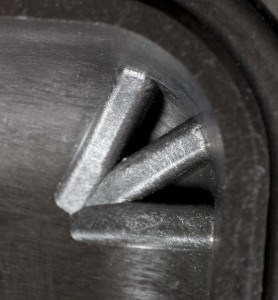
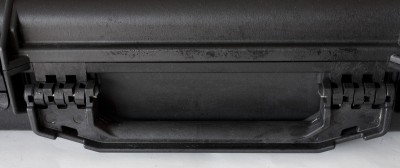
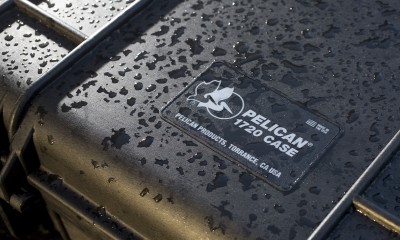
It is unbelievable that no hard gun case maker has one longer than 52-53″. I have a Ruger with a 26″ bull barrel and it is a very tight fit. With the thought of a gun with a 32-36″ barrel in my future there is not a case out there to fit it. I like long range coyote hunting.